Archeon Deck
Offers fresh interpretations of both the Minor and Major Arcana. Archeon Tarot integrates the art and iconography from mythology, mysticism, and dream imagery to create a visual language of the soul. Learn More
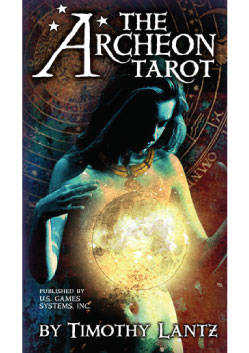 Archeon deck © U.S. Games Systems, Inc.
Archeon deck © U.S. Games Systems, Inc.
View All Cards in the
Archeon Tarot Deck
Major Arcana

The Fool

The Magician

The High Priestess

The Empress

The Emperor

The Hierophant

The Lovers

The Chariot

Strength

The Hermit

Wheel of Fortune

Justice

The Hanged Man

Death

Temperance

The Devil

The Tower

The Star

The Moon

The Sun

Judgement

The World
The Wands

Ace of Wands

Two of Wands

Three of Wands

Four of Wands

Five of Wands

Six of Wands

Seven of Wands

Eight of Wands

Nine of Wands

Ten of Wands

Page of Wands

Knight of Wands

Queen of Wands

King of Wands
The Cups
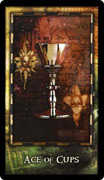
Ace of Cups
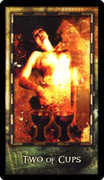
Two of Cups

Three of Cups
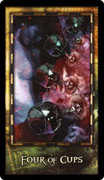
Four of Cups
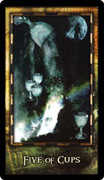
Five of Cups
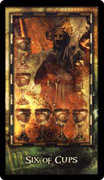
Six of Cups

Seven of Cups

Eight of Cups

Nine of Cups

Ten of Cups

Page of Cups
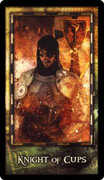
Knight of Cups
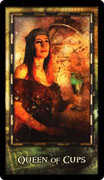
Queen of Cups
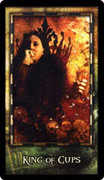
King of Cups
The Swords

Ace of Swords

Two of Swords

Three of Swords
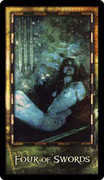
Four of Swords
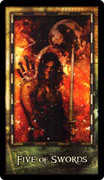
Five of Swords
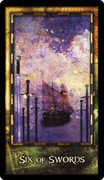
Six of Swords
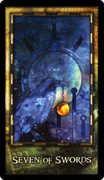
Seven of Swords
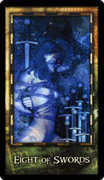
Eight of Swords
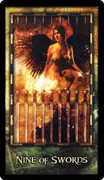
Nine of Swords
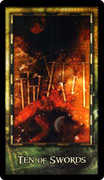
Ten of Swords
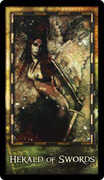
Page of Swords
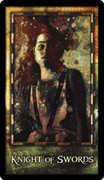
Knight of Swords
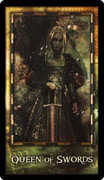
Queen of Swords
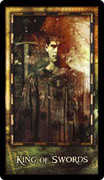
King of Swords
The Coins
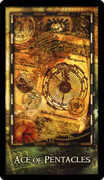
Ace of Coins
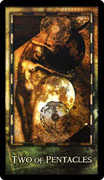
Two of Coins
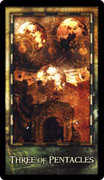
Three of Coins
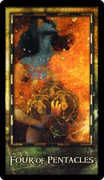
Four of Coins
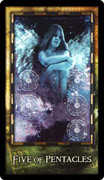
Five of Coins
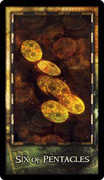
Six of Coins

Seven of Coins
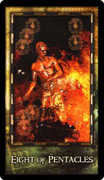
Eight of Coins
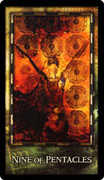
Nine of Coins
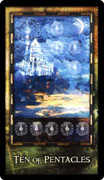
Ten of Coins
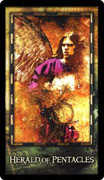
Page of Coins
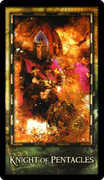
Knight of Coins
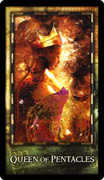
Queen of Coins
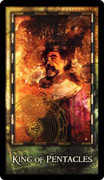
King of Coins
About the Archeon Deck
Symbolism is a 19th-century movement in which art became infused with a spooky mysticism. It was a continuation of the Romantic tradition, which included such artists as Caspar David Friedrich and John Henry Fuseli.
Had I lived in the late 19th Century, I’d like to believe I would have been a Symbolist. I’ll never actually know, but I think I would have felt at home among those artists and innovators. Much of what I do in the way of artistic endeavor has a Symbolist quality to it and perhaps nothing more so than this, The Archeon Tarot.
Begun in the late stages of October 2003, this project was not only my first endeavor with creating a Tarot deck, but it was also something of a personal journey. Each of the 78 images in the Archeon Tarot relies heavily on the collection of symbols that inhabit my mind. It is a curious mixture of traditional and non-traditional imagery from varied sources thrown into the blender of my subconscious. There will be things that you recognize, cultural and social conventions, but their interpretations may not always be what you would expect.
The name “Archeon Tarot” springs from several sources. “Archons” were regents of ancient Athens, whose jurisdiction covered civil affairs. The word “anarchy” dates from a time when strife and chaos prevented archons from being appointed by the Athenians. “Archeon” also relates to archeology. An archeologist sifts through layers of the past to discover meaning. Those who consult the Archeon Tarot sift through the layers of imagery in the cards, thus finding a way to harvest order and meaning from chaotic or seemingly unrelated events of life. Finally, “Eons” were considered to be emanations sent forth by God, or embodiments of divine attributes. Consider The Archeon Tarot a window into the mythology of one man’s world, or at least how he imagines his world to be.
The Structure of the Archeon Tarot The first 22 cards of the Archeon Tarot are collectively called the major arcana, while the remaining 56 are called the Minor Arcana. The major arcana represent the characters and themes which form the basis of the Tarot, while the minor arcana offers a perspective or focal point that may add to or help clarify the meaning of an individual card.
Many readers rely exclusively on the major arcana when seeking the advice of the Tarot. For this reason, I have placed a greater emphasis on these cards in this text. I fully encourage you, however, to explore the possibilities of including the minor arcana in your readings. Doing so can often provide a much deeper and more satisfying experience. The Major Arcana The major arcana show us the outside forces influencing events beyond the control of the individual. They may be people, events, or even things in the individual’s environment which demand attention or affect the outcome of a given situation.